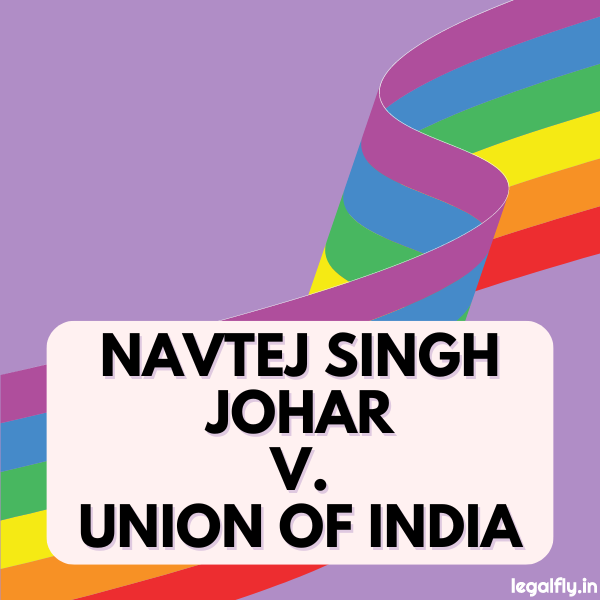Table of Contents
Case Name: Olley v. Marlborough Court Ltd
Court: Court of Appeal
Year: 1949
Citation: [1949] 1 KB 532
Introduction to Olley v. Marlborough Court Ltd
The Olley v. Marlborough Court Ltd, or Olley v. Marlborough Court Hotel case, is a landmark English contract law case on the enforceability of exclusion clauses. Decided in the Court of Appeal in 1949, it established that an exclusion clause cannot be incorporated into a contract if it is presented to the parties after the contract is formed.

The case is significant because it clarified the rules around incorporating terms into a contract. The judgment stated clearly that a party cannot unilaterally add exclusion clauses to an existing agreement. This had important implications for businesses seeking to limit their liability through disclaimers and notices. Olley v. Marlborough Court Ltd continues to be an influential case regarding the timing and notice requirements for exclusion clauses.
Background and Context
Exclusion clauses have long been used in contracts to limit liability, but courts have also long been wary of their potential abuse. In England in the early 20th century, courts generally enforced exclusion clauses as long as they were incorporated into the contract properly. However, courts sometimes find them unreasonable and not binding.
The Olley v. Marlborough Court Ltd case came at a time when exclusion clauses were widespread, though there was growing concern about their unfairness in certain situations. It highlighted issues around when terms are effectively incorporated into a contract and the limits on enforcing exclusion clauses against consumers. This case was an important step in balancing freedom of contract with protection for vulnerable parties.
The Olley case arose from an incident at a hotel at a time when the hospitality industry routinely used exclusion clauses to limit liability. It shed light on problems with exclusion clauses that were not correctly incorporated into the contract or clearly communicated to consumers. This case would help shape the legal boundaries around exclusion clauses in the decades to come.
Key Facts of the Case
Mrs. Olley was a guest at the Marlborough Court Hotel in London in 1949. During her stay, Mrs. Olley’s fur coat was stolen from her hotel room. She argued that the theft occurred due to the negligence of the hotel staff. Specifically, Mrs. Olley claimed that the hotel staff had failed to exercise reasonable care in safeguarding the key to her room.
The hotel argued that they were not liable for the stolen fur coat. They pointed to notices posted in the hotel stating that the hotel would not be responsible for guests’ valuables unless deposited in the hotel safe. However, Mrs. Olley claimed she had not seen these notices during her stay.
The key issue was whether the exclusion clause notices limiting the hotel’s liability were incorporated into the contract between Mrs. Olley and the hotel. Mrs. Olley argued that she could not be bound by terms she was unaware of when she entered into the contract.
Legal Issues Addressed
The key legal issues addressed in Olley v. Marlborough Court Ltd centred around the incorporation of terms after a contract is formed and the enforceability of exclusion clauses.
Specifically, the court examined whether the exclusion clause posted by the hotel after Mrs. Olley checked in could be considered part of the contract. The judges analyzed whether terms presented after a contract is made can be incorporated into the agreement.
The case also explored the validity of exclusion clauses that limit liability, assessing when such clauses are enforceable under English contract law. The court evaluated whether the hotel’s posted notice restricting liability for lost property constituted a legitimate and binding contractual term.
Overall, Olley v. Marlborough Court Ltd addressed key questions about modifying contracts after formation and the incorporation and enforceability of exclusion clauses in contractual agreements. The case set an influential precedent on these issues within English common law.
Court’s Decision and Rationale
The Court of Appeal held in favour of Mrs. Olley, finding that the exclusion clause was not incorporated into the contract and, therefore, not binding. Lord Denning delivered the leading judgment, analyzing the legal principles around exclusion clauses and the timing of incorporation into contracts.
The court ruled that for an exclusion clause to be incorporated into a contract, reasonable notice must be given to the party being asked to accept it before the contract is made. Posting a notice in a hotel bedroom after the contract has been entered into is not sufficient notice.
Lord Denning explained that the contract was formed when Mrs. Olley booked the room. At that point, the exclusion clause limiting liability for lost property was not part of the contract. Therefore, Marlborough Court Hotel could not rely on it to avoid liability. The court found the notice inside the room did not constitute reasonable notice to Mrs. Olley before contracting.
Implications of the Judgment
The judgment in Olley v. Marlborough Court Ltd had significant implications for the hospitality industry and or future case law involving exclusion clauses.
The case made it clear that hotels could not rely on posted notices to limit their liability for guests’ property. As a result, hotels had to take more care in safeguarding guests’ belongings from theft and loss. The case prompted many hotels to improve security procedures and invest in safety deposit boxes and other measures. It also led to changes in insurance practices in the hotel sector.
More broadly, Olley set an important precedent that exclusion clauses could not be incorporated into a contract simply by posting a notice after the contract was made. This principle influenced many subsequent cases involving exclusion clauses across different industries. The case established that the timing of communicating terms is critical and helped refine the law on how exclusion clauses can become binding on consumers. This provided greater clarity for businesses on drafting enforceable exclusion clauses.
The judgment also demonstrated the court’s protective stance toward consumers when ambiguous or unfair terms are involved. This had broader implications for contractual disputes by signalling the court’s readiness to scrutinize the validity of exclusion clauses that limit liability. Overall, Olley v. Marlborough Court Ltd was a landmark case that realigned the obligations of service providers like hotels and clarified the rules on exclusion clauses.
Conclusion
Olley v. Marlborough Court Ltd established important precedents regarding exclusion clauses and their incorporation into contracts. The key takeaways from this case are:
- To be valid and enforceable, exclusion clauses must be incorporated into the contract when it is formed. Posting notices after the fact is ineffective.
- If an exclusion clause is particularly unusual or onerous, reasonable notice must be given to the other party. Simply posting a notice is unlikely to be sufficient.
- Negligence remains a relevant consideration even when an exclusion clause exists. The clause may not protect a party acting negligently.
- Businesses in the hospitality industry must carefully draft exclusion clauses and properly incorporate them into the contract to avoid potential liability issues.
This landmark judgment continues to influence contract law today. The principles from Olley v. Marlborough Court Ltd have been upheld and expanded upon in subsequent cases dealing with exclusion clauses. It remains a crucial reference point for determining the validity and enforceability of exclusion clauses across various industries. The case has lasting importance for delineating the obligations of contracting parties.
Frequently Asked Questions
What was the outcome of the Olley v. Marlborough Court Ltd Case?
The Olley v. Marlborough Court Ltd case of 1949 was a pivotal decision in English contract law. When Mrs. Olley’s fur coat was stolen from the hotel, the Court of Appeal ruled in her favour despite a notice in her room disclaiming liability for theft. The court’s reasoning hinged on the fact that this exclusion clause was posted after Mrs. Olley had already checked in and thus couldn’t be considered part of the original contract. This landmark ruling established that parties cannot unilaterally alter existing agreements through subsequent notices, emphasizing the need for clear communication of terms at the outset of any contract. The case set a precedent for the proper incorporation of exclusion clauses. It reinforced the principle that such clauses are only binding if they’re part of the contract from the beginning.
How Did the Judgment Affect Exclusion Clauses in Contracts?
The Olley v. Marlborough Court Ltd case significantly shaped the legal landscape for exclusion clauses in contracts. The court ruled that the hotel’s exclusion clause, posted after Mrs. Olley had checked in, was not part of their contract. This landmark decision established that exclusion clauses must be incorporated at the time of contract formation, with reasonable notice given to all parties. It effectively barred businesses from unilaterally adding such clauses after a contract is made without the other party’s consent. The case provided crucial consumer protections by affirming that exclusion clauses are subject to standard contract formation rules. It has since been instrumental in preventing the unfair use of exclusion clauses to evade contractual responsibilities, ensuring a more balanced approach to contract law.
What Are the Implications for Future Contractual Disputes?
The Olley v. Marlborough Court Ltd case set a crucial precedent in contract law, establishing that exclusion clauses cannot be incorporated after a contract is formed. This ruling prevents businesses from unilaterally adding terms without consumer consent, ensuring fairness in contractual agreements. The case emphasizes the importance of establishing all terms, including exclusion clauses, at the outset of contract formation. It also reinforces the principle that unusual or onerous clauses require clear notice and explicit consent to be valid. As a result, courts now scrutinize disclaimers more closely, especially those in fine print or contrary to reasonable expectations. While exclusion clauses remain legal, Olley’s legacy demands greater care in contract drafting and promotes more balanced liability in consumer transactions, ultimately leading to fairer practices in contract law.




